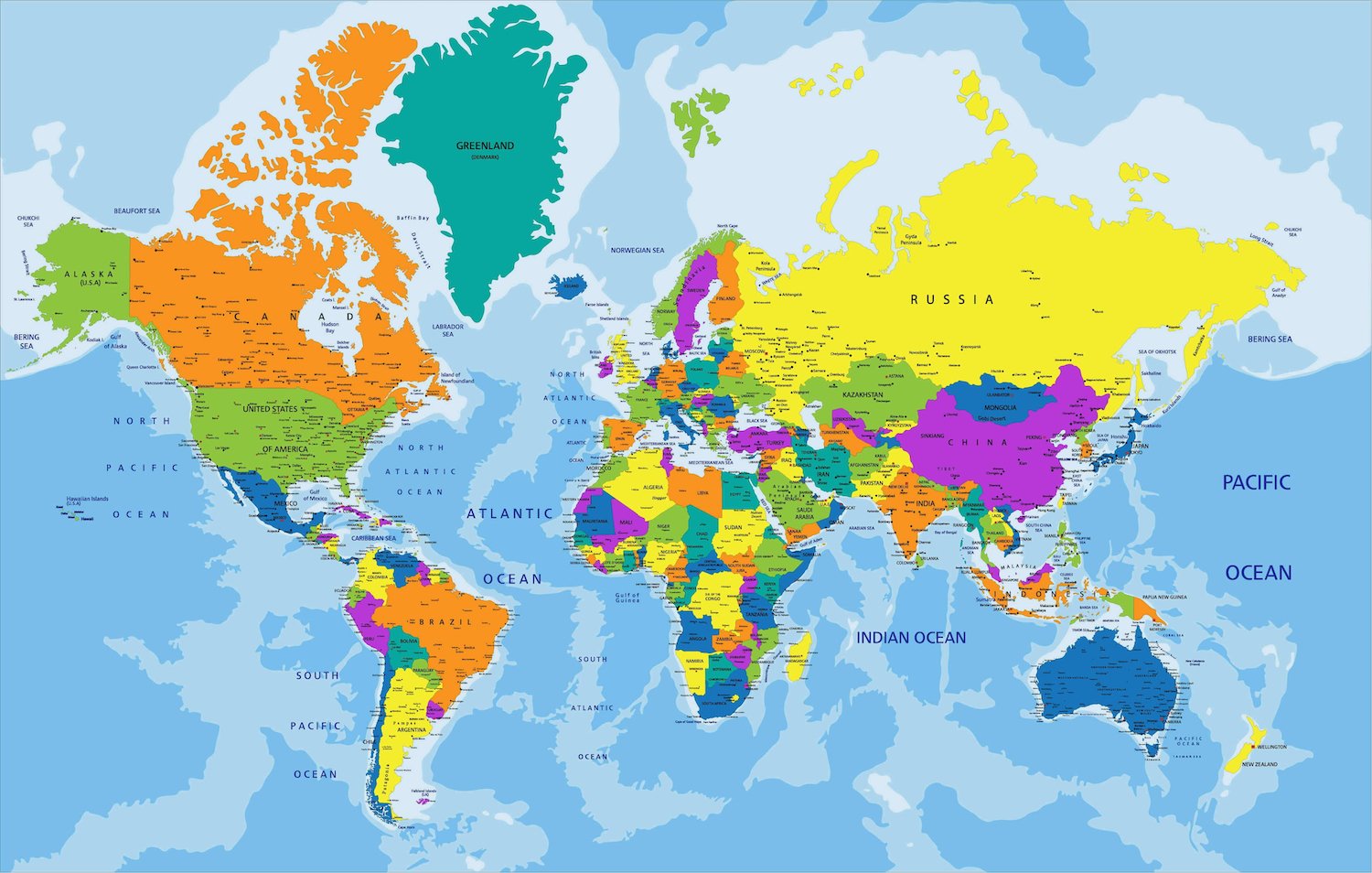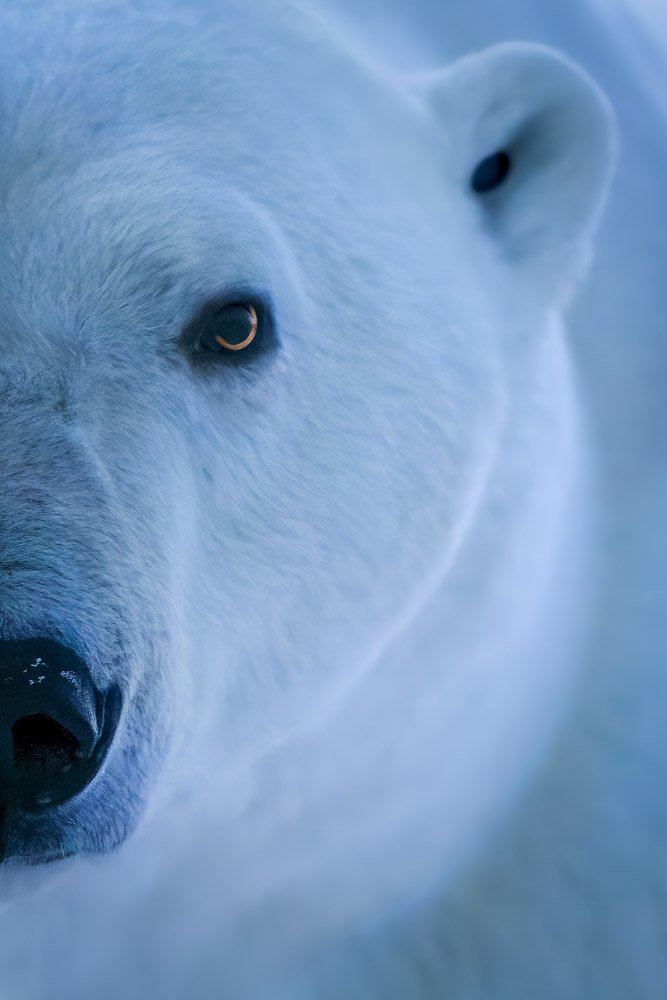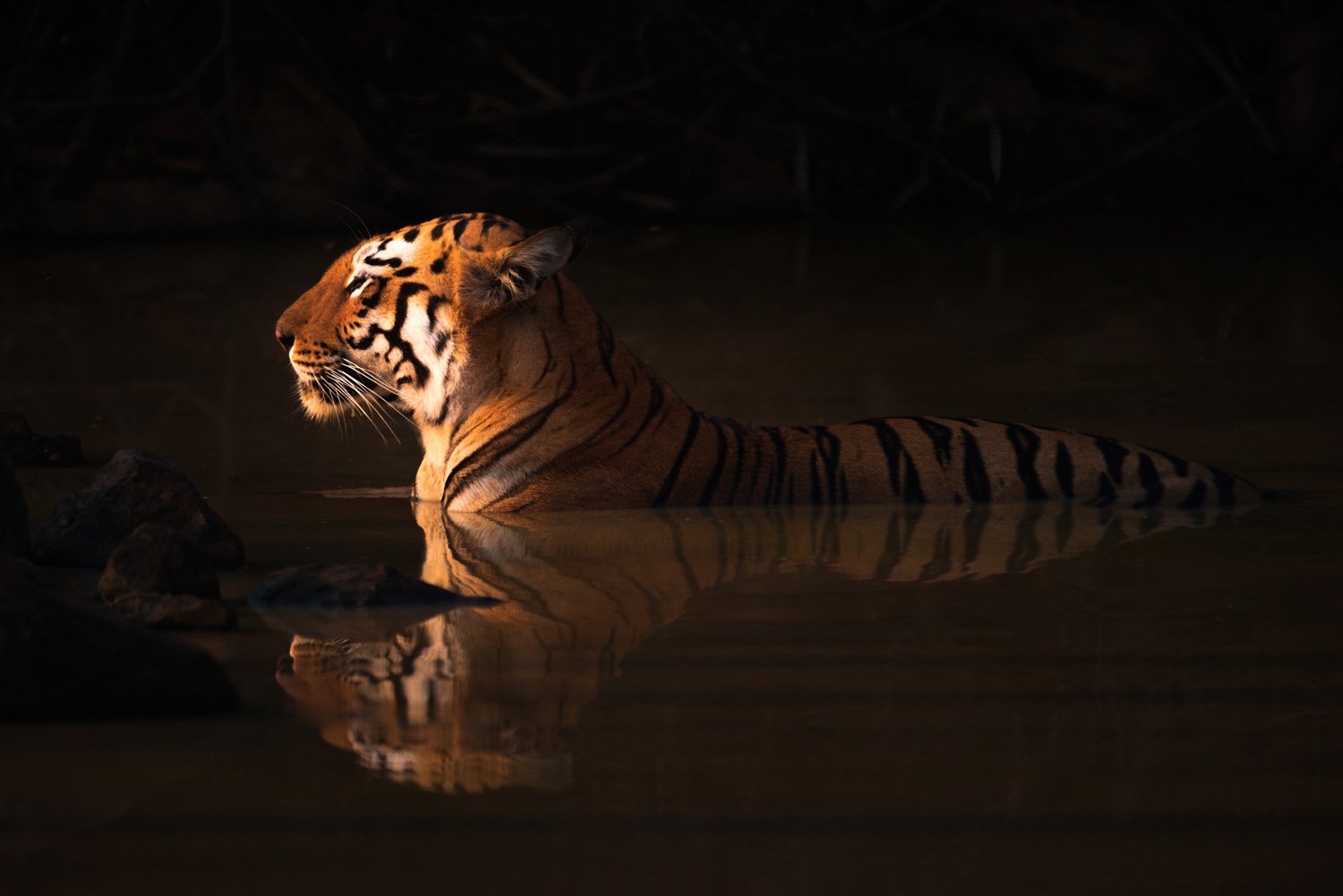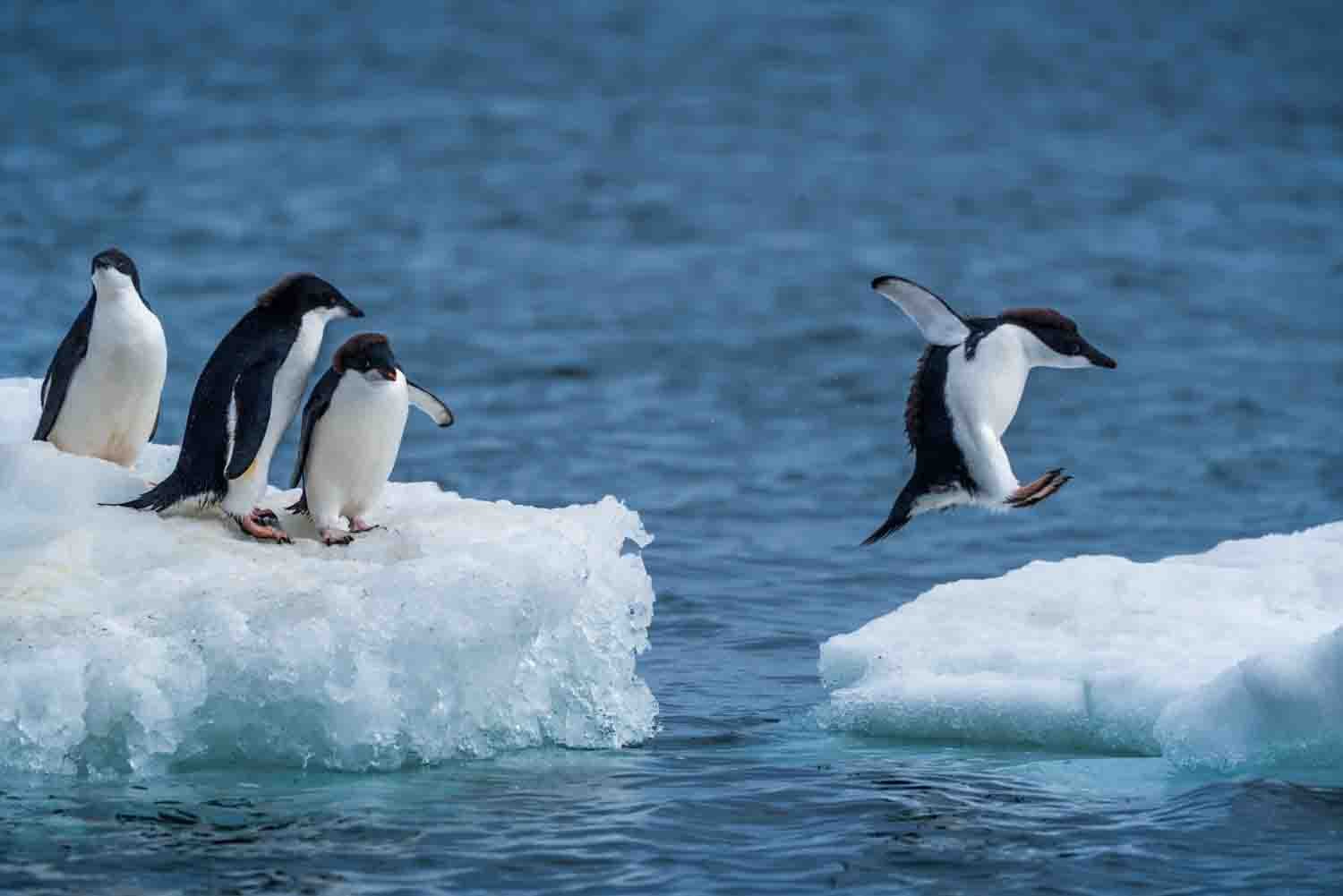10 Best Places in the World for Wildlife Photography
Where in the world…?
I’ve been a wildlife photographer for 10 years now, and I’ve been on over 30 trips in that time. Some have been just a long weekend; some have lasted for months! I’ve set foot on all seven continents, but most of my expeditions have been to Africa. I love the big cats—what can I say…?!
If you want to learn from my experience, here are my top 10 locations for wildlife photography. There are a few good places I haven’t been to, such as South Africa, but these are my favourites so far.
10. Nunavut
Pros
Seeing polar bears at eye level
Cons
Extreme cold plays havoc with your gear—and your fingers
It’s a pain to get there!
Strict airline weight limits for hand luggage and checked bags
Nunavut is the largest and most northern territory of Canada. Every year, polar bears migrate north around the western shore of the Hudson Bay, and I went to see them in November 2021 on a trip led by Andy Skillen.
Normally, it’s very cold there, and the average highs and lows in November are -11° and -19°. That means you have to take the right gear with you—even down to special snow boots and inner and outer gloves!
Fortunately, it wasn’t that bad when I went, and there wasn’t much snow on the ground. We had a steady stream of one or two bears a day, and it was great to be able to spend so much time with them.
They’re the largest land predator on Earth, and it’s very exciting to be able to stand face-to-face with them. The guides carry whistles and pistols to ward them off, and there’s an electric fence around the compound just in case, so you don’t feel in any danger.
You can even walk around outside the wire and look for arctic foxes and arctic hares, and we even saw a snowy owl in the distance!
The only problem is the cold—and especially the temperature difference between inside and outside the cabins. You have to leave your camera gear on the porch to avoid condensation building up indoors that will freeze if you go outside again.
You also have to monitor your batteries. They don’t last very long in the cold, and you have to keep a few spares in your pockets just in case.
I also had a problem with my 80-400mm zoom lens freezing up while I was there. It already had some sand in the mechanism from previous trips to Africa, and trying to use it in -25° was the final straw!
To top it all off, there are lots of rules to follow when it comes to where you can leave your gear. I guess that’s fair enough when you have polar bears walking past, but it means there’s a lot to think about!
Overall, though, I had a good experience. It took four flights and more than 24 hours to get there, and my gear did occasionally let me down—even before BA managed to lose one of my bags! However, I got a few polar bear shots at sunrise and sunset that I’d never have been able to take in Svalbard!
9. India
"Tiger, tiger, burning bright…"
Pros
Tigers!
Cheaper than Africa
Cons
Few clean backgrounds
Crowded sightings
Suzuki Gypsy vehicles
Restricted hours
Queues to enter the park
Travel time
India is a great place to see tigers—and drink fresh mango lassis! I’ve been three times and visited Bandhavgarh (twice), Ranthambore and Tadoba. On my first visit, I spent a week in Bandhavgarh and Ranthambore, but in all that time I only saw two tigers!
Fortunately, I saw over a dozen tigers on my last two trips to Tadoba and Bandhavgarh, so that wasn’t a problem. The real issue with India is the forest areas. It’s very hard to find clean backgrounds, so you almost have to use slow pans to stop annoying leaves and branches cluttering up your shots.
The other issue is that it’s all about the tiger. If you go on safari in Africa, there are so many extraordinary creatures that you’re spoilt for choice. However, everything revolves around the tiger in India, so it’s often just impossible to stop to photograph any other wildlife…!
If you can put up with those constraints, India can offer you the satisfaction of seeing the biggest cat in the world, and that’s something special. One girl on my trip even broke down in tears when she talked about seeing her first tiger…!
8. Pantanal
Just Jaguars
Pros
Almost guaranteed sightings of jaguars, anteaters and hyacinth macaws
Jaguars often swim close to the boat
Cons
Handholding long lenses can be tricky on boat rides
Boats jockey for position and get in the way
Travel time
I went to the Brazilian Pantanal in order to cross another big cat off my list. It was quite easy to see jaguars lazing in the sun on the banks of the local rivers, and I was even lucky enough to see one of them kill a caiman!
The format of the trip involved a few days on land to see hyacinth macaws and anteaters, and then we stayed in a floating hotel and took boat rides every day for a week.
Our boat was equipped with six rotating tripods, so we could all mount our cameras and lenses on them if we wanted to. It felt like being the tail gunner in a Lancaster bomber!
We saw jaguars every day on our boat rides, and it was exciting to see them for the first time. They have incredibly cold eyes, though, so they’re not exactly cute and cuddly!
7. Galápagos Islands
Jurassic Bark
Pros
Animals pose for you
Unique species like the marine iguana
Convenient overnight boat rides
Cons
Ugly, volcanic landscape
Having to live aboard a boat (if you get seasick!)
Travel time
The rather ugly, volcanic landscape meant that I wasn’t sure about visiting the Galápagos Islands. However, when a couple of my friends visited and recommended it to me, I decided to take the plunge.
Their clinching argument was that the wildlife just sits there, almost waiting to be photographed! Giant tortoises wander slowly across the grass, sea lions lie on park benches, marine iguanas laze around on the rocks, soaking up the sun, and the water’s edge is littered with colourful Sally Lightfoot crabs. It’s almost impossible to take a bad picture!
Like a lot of these long-haul destinations, it took over 24 hours to get there, but, after that, it was pretty convenient staying on a boat and making the journey to different islands overnight. I don’t get seasick, fortunately, but a couple of the guests suffered pretty badly on one of the crossings.
All in all, it was an ideal trip for a wildlife photographer—just like working with models in a studio!
6. Botswana
Pros
Lots of water for boat trips
Certain to see elephants
Perfect blue skies
Lots of lilac-breasted rollers
Cons
Rare to see the big cats
If you love water, you’ll love Botswana! Wherever you go on the main circuit, there’s always water nearby. I’ve been to the Okavango Delta, Moremi, Savuti and Chobe, and the water always acts as a backdrop and gives you a chance to see the wildlife interacting with it.
Elephants are the biggest draw, and you can often see them wading across the Chobe floodplain in the wet season or coming down to the river to drink and cool off in the dry season, when herds can number hundreds of individual animals.
You can also see plenty of birds, especially in the wet season when migratory birds such as the white-faced whistling duck flock to the Chobe river. That’s where most of the action takes place, so that’s where game drives usually end up in that area.
Two of my favourite birds are the lilac-breasted roller and the African fish eagle, and Botswana is a great place to see both of those. That makes it a great place to take bird-in-flight shots—especially from a boat on the smooth, calm, slow-moving Chobe river.
The only downside, really, is the lack of big cats. You’ll occasionally see lions and leopards, but there are no wide expanses of savannah to attract cheetahs, which means no 70 mph hunts! Too bad…
Other than that, Botswana gives you the choice of going on game drives or boat rides (or both!), and you’re pretty much guaranteed to see elephants. If you’re more interested in birds, I’d go in the wet season. Otherwise, if you like to see more mammals, the dry season is best.
5. Laikipia
Pros
Rhinos and black panthers!
Views of Mount Kenya
A four-hour drive from the airport in Nairobi
Cons
Lack of big cats
My very first trip to Africa was also my very first expedition as a professional wildlife photographer when I visited Laikipia in Kenya. I went on safari for a week and then climbed Mount Kenya with a small group of guests.
Everyone was unbelievably friendly and helpful, and that still hasn’t changed in 10 years! My second and most recent trip to Laikipia came last year when I visited Ol Jogi.
Ol Jogi used to be a private house, but it’s now a safari lodge and rhino sanctuary. The rooms are spectacular, and high season rates are around $2,000 per person per night! Fortunately, I was able to do a deal with the lodge for a week’s free accommodation in exchange for copies of my images, but I wasn’t in one of the posh rooms…
Black and white rhinos are the big attractions in the area. I saw a black rhino virtually every day at Ol Jogi, and the last remaining northern white rhinos are in the Ol Pejeta Conservancy nearby.
Sadly, Laikipia doesn’t seem to be a great place for lions, leopards and cheetahs. I only saw one cat (a male lion) during my first safari in 2013, and they were also few and far between at Ol Jogi. Fortunately, I did see a female leopard with one cub at White Rock, so I ended up going back there every day to see them!
If you love leopards and rhinos, I thoroughly recommend Ol Jogi, and the other benefit of going somewhere in Laikipia is that you’re not far from Mount Kenya. That means you can often take wildlife shots with the iconic silhouette in the background. Nice…!
4. Serengeti
Pros
Big Five sightings (including tree-climbing lions of Lake Manyara)
Good for cheetah hunts
Great Migration from October to July
Ngorongoro Crater
Cons
Flat landscape with little water
The Serengeti in Tanzania and the Masai Mara in Kenya are both part of one enormous plain. They both offer great opportunities to see the Big Five (elephant, rhino, African buffalo, lion and leopard), and the nature of the landscape means you might even see a cheetah hunt!
I’ve taken more pictures of cheetahs than any other animal. They’re perhaps not as pretty as leopards, which most guests choose as their favourite safari animal, but they make up for it by putting on a real show when it comes to hunting.
To me, there’s nothing more exciting than a cheetah hunt. I’ve only seen a handful, but trying to capture photos of a cheetah and its prey at up to 70 mph is one of my favourite occupations. If you feel the same, the Serengeti is a good place to start!
One of the other benefits of the Serengeti is the chance to see the Great Migration, which is the largest movement of animals on the planet and one of the Seven Wonders of the Natural World.
Over a million blue wildebeest, plains zebra, Grant's gazelle, Thomson's gazelle, eland and common impala progress in a giant loop through the Serengeti and Masai Mara, grazing on the freshest grass and famously jumping across any rivers that get in their way!
The Great Migration offers the best chance of seeing thousands of game animals—and with them come the usual predators in the form of lions, leopards, cheetahs and even crocodiles!
If you want a change from the African savannah, you can also visit some of the other local areas, such as the Ngorongoro Crater and Lake Manyara.
3. Antarctica
Pros
Unique wildlife, including whales, orcas, seals and penguins
Many seabirds, including various albatrosses
Chance to see beautiful icebergs and maybe a calving
Loads of history, including the story of Shackleton’s expedition
Cons
Expensive
Hard to reach
Lack of variety in wildlife species
Falklands, South Georgia and the Antarctic Peninsula are days apart
Must cross rough seas around Cape Horn
High chance of being ‘weathered out’
No toilet breaks!
Going to Antarctica always seemed an impossible dream to me. It was far more than I could afford, and it was so hard to reach. Fortunately, I found myself with enough cash to be able to go to the Falklands, South Georgia and the Antarctic Peninsula in 2016, and then I went on a much cheaper cruise to the Peninsula again in 2021.
The joy of the Antarctic region comes in two parts: the wildlife and the environment. Seeing whales, orcas, seals, penguins and albatrosses is exciting enough, but you also get the chance to witness a dangerous, hostile, austere but often beautiful seascape of ice floes and icebergs.
Rarity is richness, as I often say, and that’s part of the appeal of Antarctica. It’s just about the most extreme environment on the planet, and it’s populated by many wildlife species that you won’t find anywhere else—and certainly not in such extraordinary numbers. There are 60,000 king penguins on Salisbury Plain in South Georgia, and going there was the highlight of my first voyage.
If you go in the Southern Hemisphere summer, the temperature usually hovers just above freezing, so it’s not unbearably cold, but weather is always an issue. If you go on an Antarctic cruise, the tour leader will usually give a presentation each evening outlining the plan for the following day, and an important part of that is the weather.
I was very lucky on my two trips, and I hardly had to miss any landings due to being ‘weathered out’, but the climate is extremely unpredictable. Sunshine can swiftly be followed by gales and even blizzards, so you have to accept the odd disappointment.
The other inconvenience is not being allowed to go to the toilet during a landing. There aren’t any rest rooms, obviously, and there’s even an international treaty banning guests from relieving themselves in certain areas! I guess you just need to control your water intake…
Overall, though, going to the Antarctic is a great adventure, and I’m glad I’ve had the chance to go on two expeditions. There’s a boatload of history down there, and one of the highlights of my first trip was sharing a tot of whisky at Ernest Shackleton’s grave on South Georgia.
2. Masai Mara
Pros
Big Five sightings
Best place for cheetah hunts
Great Migration in August/September
Stormy skies, great for black and white
Cons
Flat landscape with little water
The Masai Mara is perhaps the ultimate destination for an African safari. It offers good chances of seeing the Big Five, and the variety of landscape and vegetation means you can target different species: trees for leopards and plains for cheetahs, say.
My favourite place in the Masai Mara is Kicheche Bush Camp, which is a private conservancy part-owned by wildlife photographer Paul Goldstein. The first time I went, I’d been on five safaris without seeing a single kill, and I was very frustrated and disappointed.
However, during that one week, I ended up seeing FIVE cheetah kills! I put that down to the unique ecosystem of the Mara and also to Paul’s skill and judgment in positioning the jeeps in just the right places to witness the action.
Kicheche now has a number of different camps in the area, but the big advantages of its status as a private conservancy are that you can drive off-road and there are no opening hours. That means you can see sunrises and sunsets as well as go on night drives.
1. Brooks Falls
Pros
Change to see bears catching salmon
Cons
Almost impossible to book due to popularity
Hard to judge when to visit
Everyone gets similar shots from the same viewing areas
Cold and wet climate
Travel time
Going to Brooks Falls was one of the highlights of my photographic career. Ever since Thomas D Mangelsen took his famous Catch of the Day shot of a brown bear grabbing a salmon in mid-air on the waterfall, Brooks Falls has become a more and more popular destination.
It was hard to plan my trip as beds get booked up a year in advance, and there’s even a lottery to control demand for nights spent at Brooks Lodge. I only managed to spend one night there, so I had to take a floatplane in from Big Salmon, a little town around half an hour away.
The weather was poor—even in the summer month of July—and I had to queue up for each hour of viewing from the bleachers. There was only room for around 20 photographers, so everyone had to take turns.
That was a bit of a pain, but the biggest difficulty was getting a shot of a bear with its mouth open and a salmon in mid-air. When I was there in the last week of July, the salmon run was almost over, which limited my chances.
It also didn’t help that I had a Nikon D800 and D810 whose frame rates were only 4 and 5 fps! That meant I had to have great reactions to get even one frame of the salmon in mid-air, and it was hard work.
In the end, I managed to get two shots of bears catching salmon that looked pretty much the way I wanted them to—one of the whole bear and one close-up. And it was worth it! The shot above is probably the best I’ve ever taken. I just wish there was some separation between the fish and the bear’s jaw. Never mind. Maybe next time…!
Verdict
I imagine most wildlife photographers have a bucket list of destinations, and I’ve been lucky enough to cross off quite a few so far! I always like to go to new places, but the reason I’ve been to Africa so many times is that the wildlife and the conditions are just so superior.
If you like action shots and experiencing the thrill of the chase, there’s no better destination than the Serengeti or Masai Mara. However, Antarctica is a unique part of the world and the only place where you’ll see such an abundance of penguins and other marine life.
So how did Brooks Falls make it to number one? Well, it’s all about THAT picture. I don’t think I’ll ever have the chance to repeat the feat, so it has a special place in my portfolio…
If you’d like to order a framed print of one of my wildlife photographs, please visit the Prints page.
If you’d like to book a lesson or order an online photography course, please visit my Lessons and Courses pages.









